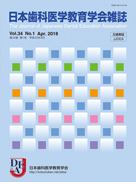Abstract In this study, a total of 53 dentists undergoing clinical training at Asahi University Dental and Medical Center in 2019, of which 24 were on Program A (single facility program) and 29 on Program B (multiple facility program) were surveyed to determine the satisfaction level of dentists regarding their own clinical skills and the training environment.
The questionnaire consisted of 25 items (with a five-point scale) relating to clinical skills and five items (with a four-point scale) relating to the training environment.
In terms of clinical skills, the dentists were found to be highly satisfied with their ability to perform “loose tooth extraction” (92.5%) and “infiltration anesthesia in the anterior region” (92.5%). They were least satisfied with their ability to manage “anterior bridge” (34.0%), “posterior bridge” (37.7%), and “mandibular wisdom tooth extraction” (45.3%). In terms of training environment, the dentists were satisfied, in descending order, with “personal relationships” (92.5%), “instruction methods” (88.7%), “skills acquisition” (84.9%), “number of patients” (81.1%), and “knowledge acquisition” (73.6%).
Canonical correlation analysis based on the results of the questionnaire―with the 25 clinical skills items as dependent variables and the five training items as independent variables―revealed a strong correlation (0.908) between satisfaction ratings for clinical skills and the training environment. Structure factor values suggest that, among the items relating to training environment, “number of patients” per day and “instruction methods” contribute the most to the interdependent relationship between satisfaction with clinical skills and satisfaction with training environment.
View full abstract
